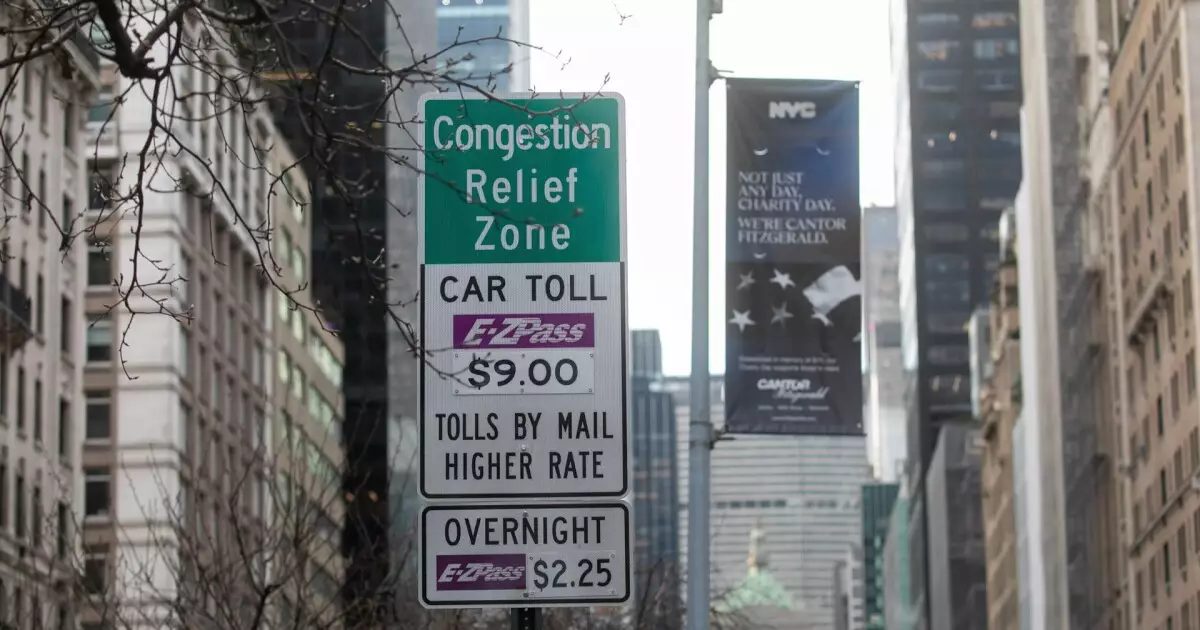The Controversy Over New York City’s Congestion Pricing Program: A Clash of Interests

The recent termination of New York City’s congestion pricing program by the Trump administration has ignited intense debate surrounding transportation infrastructure and economic fairness in the city. Following its implementation in January, the program aimed to regulate traffic congestion in Manhattan by imposing a toll on vehicles entering specific zones. However, this groundbreaking initiative faced federal scrutiny just weeks after it took effect, revealing deep divides among policymakers and stakeholders.
Originally proposed by former Mayor Michael Bloomberg in 2007, the congestion pricing scheme was designed to reduce gridlock and generate revenue for public transit improvements. The plan required drivers entering Manhattan below 60th Street to pay a toll, initially set at $9. Although various legal challenges have plagued the project over the years, New York Governor Kathy Hochul re-launched the program in November after a brief suspension amid concerns about costs. The revenue generated from the tolls is earmarked for funding $15 billion in bonds to support the Metropolitan Transportation Authority’s (MTA) capital projects, paving the way for extensive improvements to the city’s transit infrastructure.
Despite these noble intentions, Transportation Secretary Sean Duffy characterized the program as a “slap in the face” to working-class citizens and small business owners. Duffy’s strong rhetoric underscores a significant critique of the plan: that it disproportionately burdens lower-income drivers who already contribute to road construction and maintenance through state and federal taxes. This commentary reveals a growing concern that urban transportation policy is increasingly alienating rather than aiding the very individuals it is supposed to serve.
The essence of the Trump administration’s decision to withdraw federal approval for the congestion pricing program stems from the belief that it violates the principles of the Value Pricing Pilot Program (VPPP). According to Duffy, the project does not provide drivers with a toll-free alternative to accessing Lower Manhattan, which contradicts the VPPP’s objective of reducing congestion through equitable tolls. This perspective raises important questions regarding the definition of congestion, the efficiency of the tolling structure, and the implications for urban drivers.
The sudden reversal seemed to pivot on Trump’s administration’s wider transportation policy philosophy, emphasizing the importance of maintaining free access to highways and protecting taxpayers. For many observers, this raises concerns about the federal government’s role in local transit decisions—essentially, whether politics is overshadowing local needs and innovative solutions in traffic management.
The MTA’s rapid response to file a lawsuit against the federal decision indicates the high stakes involved for countless commuters and the regional economy dependent on improved transit infrastructure. MTA chair Janno Lieber has praised the program as “highly successful,” citing reductions in congestion and improved travel times for both public transit users and drivers alike. This assertion emphasizes the potential benefits such policies could bring if executed without federal intervention.
The economic implications of the congestion pricing debate are multifaceted. While some business owners perceive the toll as detrimental to their bottom line, others argue that reduced congestion will lead to increased efficiency and potentially boost customer foot traffic. Moreover, the program’s promise of improved public transit could enhance the overall accessibility of the city, benefiting residents across the socio-economic spectrum.
This controversy encapsulates the precarious balance that local governments must strike between addressing congestion, generating revenue, and ensuring fairness across diverse populations. While congestion pricing may be a practical tool to alleviate urban traffic woes, it simultaneously raises moral and economic questions about who bears the costs associated with such initiatives.
As cities confront the growing challenges of transportation and sustainability, the New York City congestion pricing program serves as a critical case study in the complexities of urban policy decisions. The road ahead might require more collaborative dialogues between federal and local entities to cultivate policies that not only reduce congestion but also promote equity among all stakeholders involved. The outcome of this legal struggle may well influence how cities strategize around transportation infrastructure for years to come.





